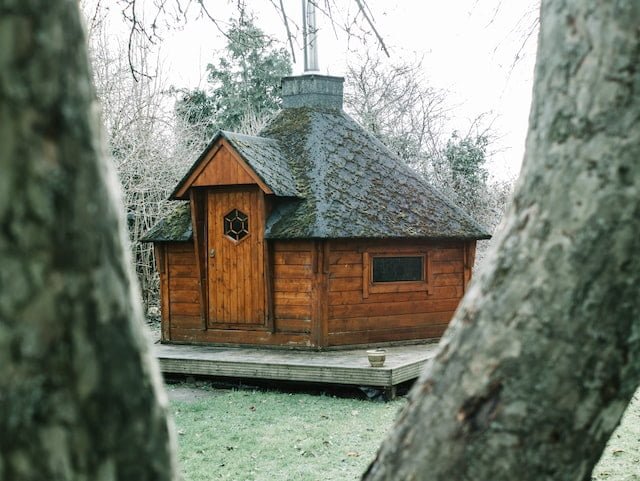When looking to build your own sauna instead of buying one of our home sauna kits, it's important to use the proper sauna insulation in order to keep your sauna warm, and speed up the heating process. If your sauna is inside, it might need less sauna insulation than if it's outside, but you will still need to have some.
For indoor saunas, using a good quality sauna wood will normally be enough insulation for you as long as it is properly sealed. If you require an idea of what wood to use for your sauna, check out the best wood for sauna here.
For outdoor saunas, your insulation requires depends on your weather. Warm places, once again, a nice quality, thick wood that's properly sealed will be enough sauna insulation to keep you warm, but in below freezing temperatures, you will need some extra insulation.
Does My Sauna Need Insulation?

The short answer to this is yes. The longer answer it that if you purchase a prebuilt kit, it will come pre-insulated, you will not need to buy extra insulation. If you are building your own sauna, you will need sauna insulation to retain heat and not waste energy.
Types of Sauna Insulation
Any hardware store will carry a variety of insulation kinds, but only a select handful will function in an outdoor sauna. Read on for some advantages and disadvantages to help you decide which insulation type is best for your outdoor sauna.
High-Quality Wood
Quality sauna wood is the most important thing when building an outdoor sauna. The proper wood provides insulation, retains heat, and dries quickly to prevent mildew. The most common types of woods for saunas are Aspen, Cedar, Alder, Spruce, and Pine.
Rolls of Fiberglass
Fiberglass rolls work well for insulating your outdoor sauna since it encourages moisture retention and is easy to install. Put your rolls in between the outer and inner layer of your sauna for best results.
I recommend avoiding loos fiberglass as it can be dangerous to breathe in and work with. The rolls are much safer and still effective.
Thermoplastic Boards
Extruded polystyrene foam, polystyrene foam, or polyisocyanate insulation boards offer high sauna insulation effectiveness. Compared to cotton or fiberglass insulation, they are simpler to install, and work great under the sauna floor.
Polyiso boards have foils with reflective surfaces on the sides to reflect heat and provide water resistance.
Repurposed Cotton
The blue color of recycled cotton insulation is due to the use of recovered fabrics, primarily jeans. In comparison to fiberglass, this choice is more expensive. However, handling the material or paper poses no risk. The cost difference is due to the recycled-cotton insulation's slightly greater effectiveness compared to fiberglass.
Aluminum Foil Vapor Barriers
In a conventional sauna, the vapor barrier is an integral part of the building process. Most sauna makers employ foil vapor barrier because it protects the building from moisture and is easy to install. For the finest outcomes, use high temperature foil tape, which is an optional extra. Attach a foil vapor barrier behind the tongue and groove sauna wood paneling on the walls and ceiling.
Where to Apply Your Sauna Insulation

Sauna insulation for your outdoor sauna's ceiling, floor, and walls may require different materials and approaches depending on the size and location. Those who are unsure may ask the sauna's manufacturer or a professional sauna technician for clarification.
When it comes to insulating your outdoor sauna, the most important area is the ceiling, followed by the floor, as these are what will be in contact with either the cold ground, or snow pile up on top. The walls will still need insulation, but not as much as these other two areas.
Warm air rises, causing much of your sauna's heat to escape through the ceiling. To combat this, use polyiso boards, and a vapor foil barrier to prevent heat loss and insulate your sauna.
For the floor, putting your sauna on a concrete base followed my a layer of fiberglass rolls before your wood. On the inside of the sauna floor, you will need more thermoplastic boards, and maybe another vapor foil barrier depending on your conditions.
Despite the fact that the majority of heat escapes through the roof, a sizeable quantity also escapes through the walls of the sauna, which are not insulated. This means you'll need polyiso boards to insulate your sauna's walls. However, if you're on a tight budget, you can get by with recycled cotton insulation, or make use of a foil sauna vapor barrier to keep moisture out.
Conclusion
In all, the most important sauna insulation is the wood you use. Pre-built sauna kits already come insulated and rarely require insulation. If you are building your own outdoor sauna, it's import to properly insulate it using fiberglass, vapor foil protection, thermoplastic boards, or other methods.















